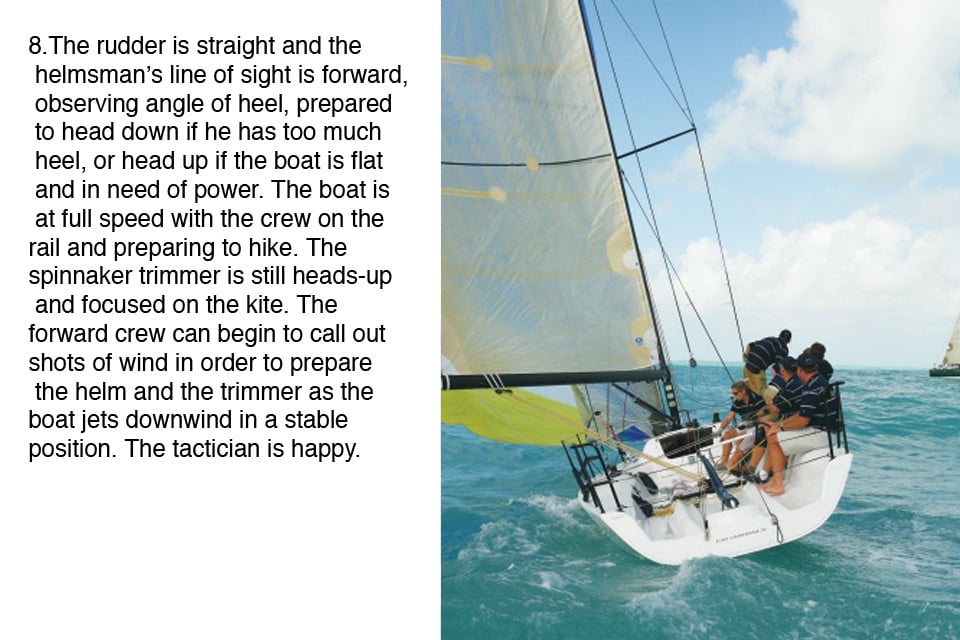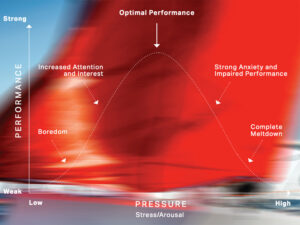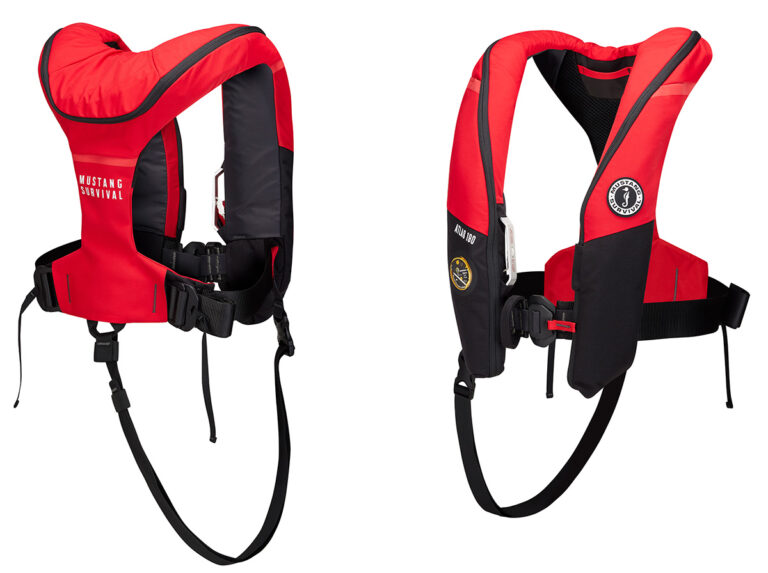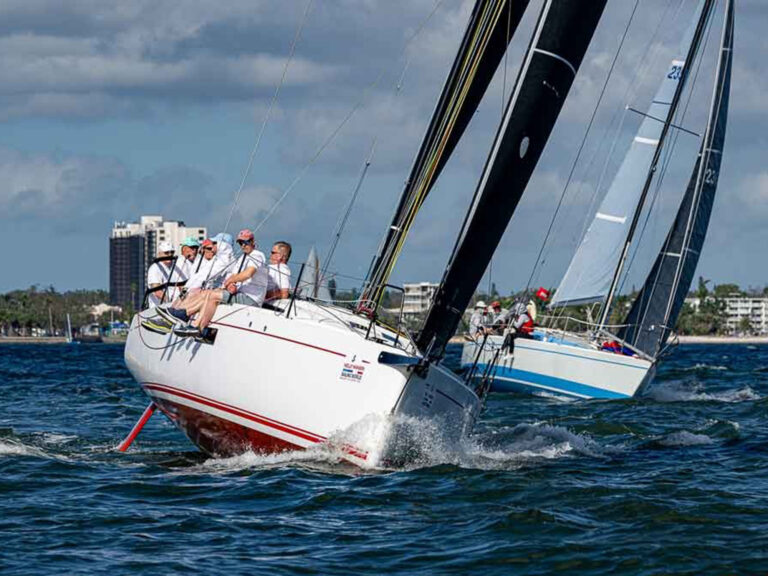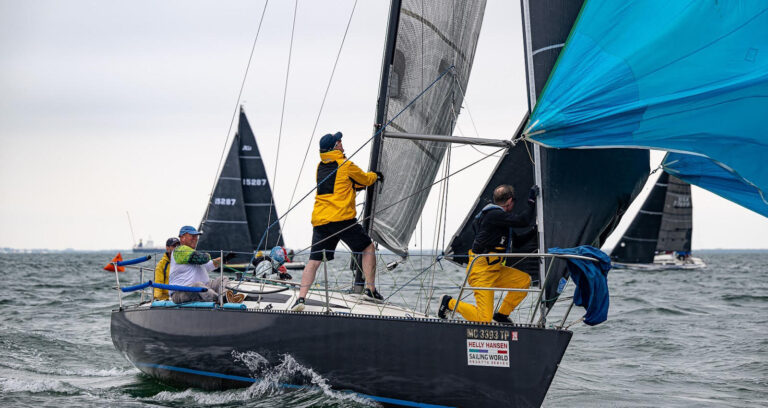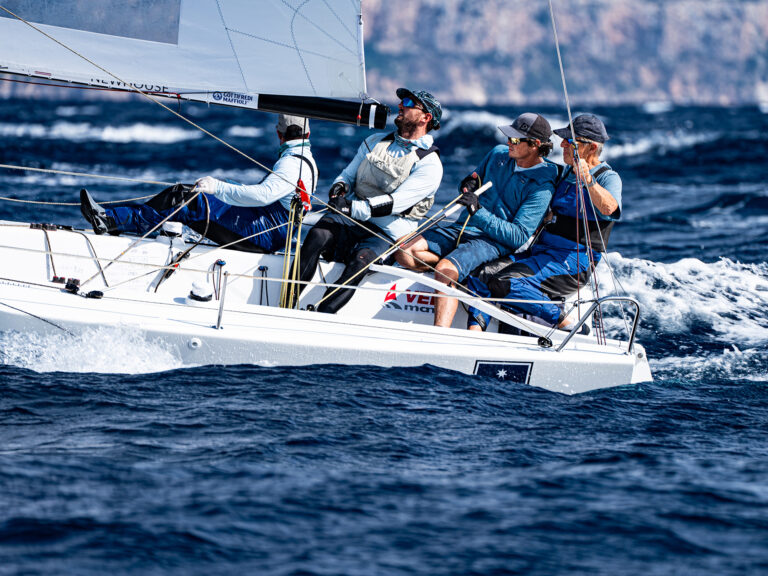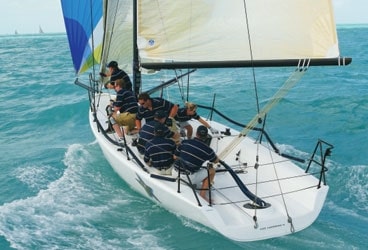
expertjibe368
In the Melges 32 class we’ve done a lot of clinics aimed specifically at bringing new teams up to speed with this big sportboat in which maneuvers, done right, require fluid movements by seven crew working in a confined space. We’ve videotaped both practice and racing scenarios, analyzing maneuvers in excruciating detail. One realization that has come out of all of this is the importance of what we call the pre-jibe, a maneuver that really works best in winds less than 14 knots, a condition we see a lot of through a typical racing season.
The pre-jibe is performed by bearing away to a dead-downwind course, holding the turn, and having the crew pull the new spinnaker sheet around. Once the spinnaker clew is near or at the shrouds, the helm completes the turn. The kite will fill before the mainsail comes across-this is the end goal of the pre-jibe. The boat comes out of the jibe with speed and power, making it a successful VMG jibe.
To make this maneuver successful, each person has a role on the boat, and communication is paramount. Practice is important because when the heat is on, you need a smooth, consistent jibe in order to beat a competitor at a downwind finish or if you need inside room at a leeward gate. Whatever the case, always practice at full speed and full intensity, so when the time comes you’ll be ready. Let’s look at this pre-jibe step-by-step.
.
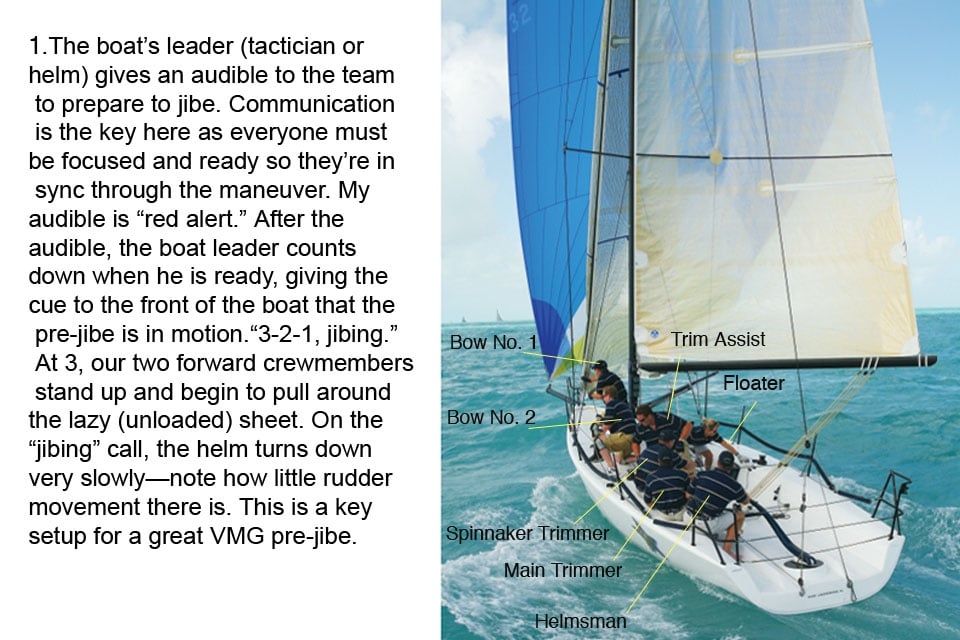
jiberight1
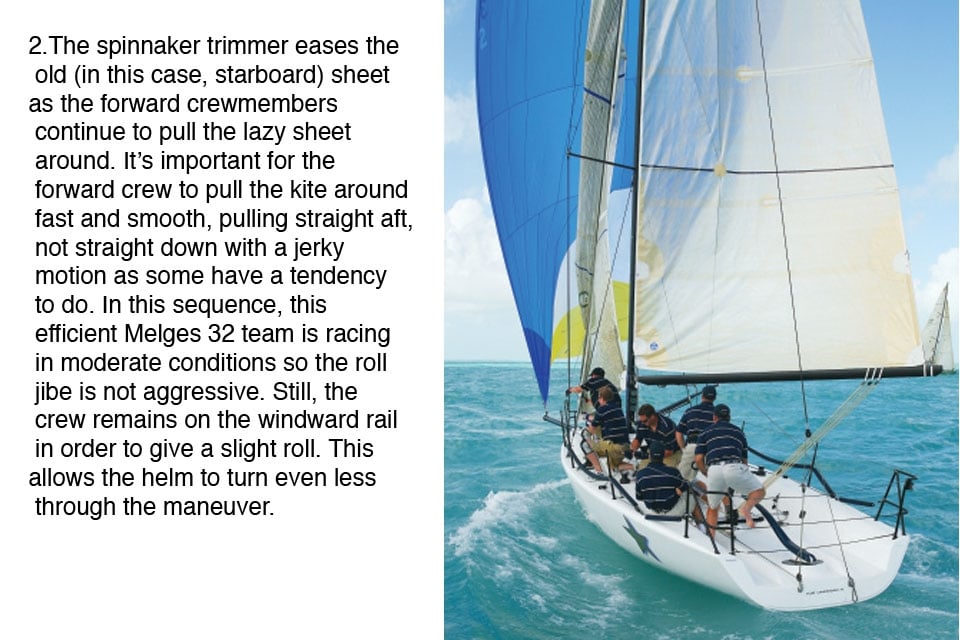
jiberight2
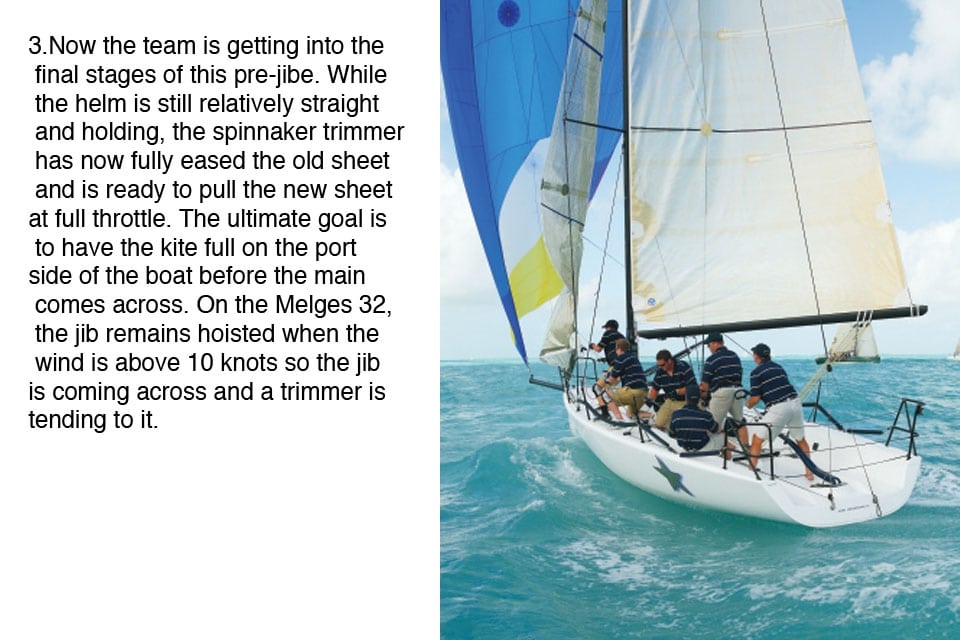
jiberight3
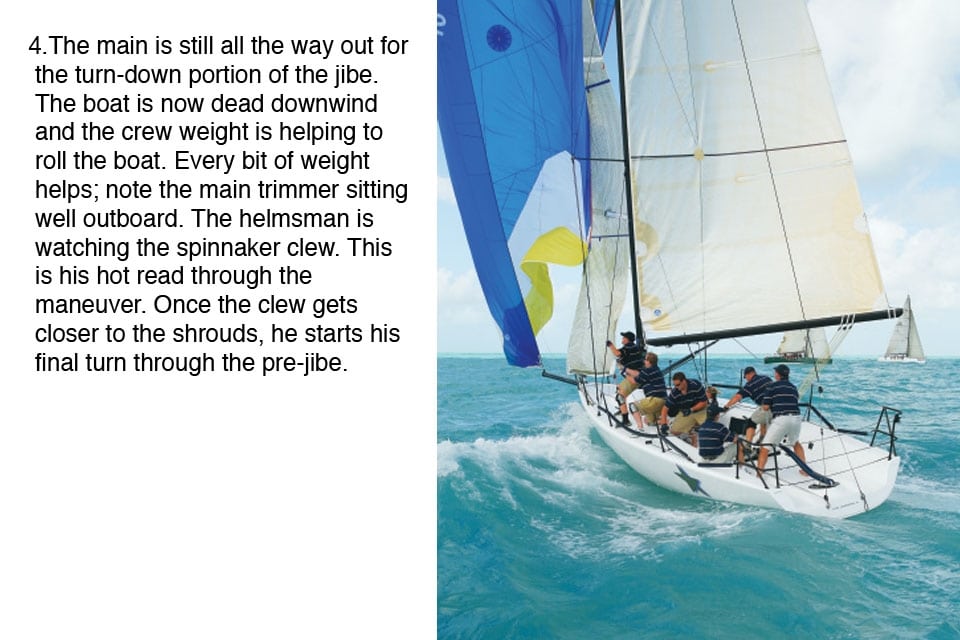
jiberight4
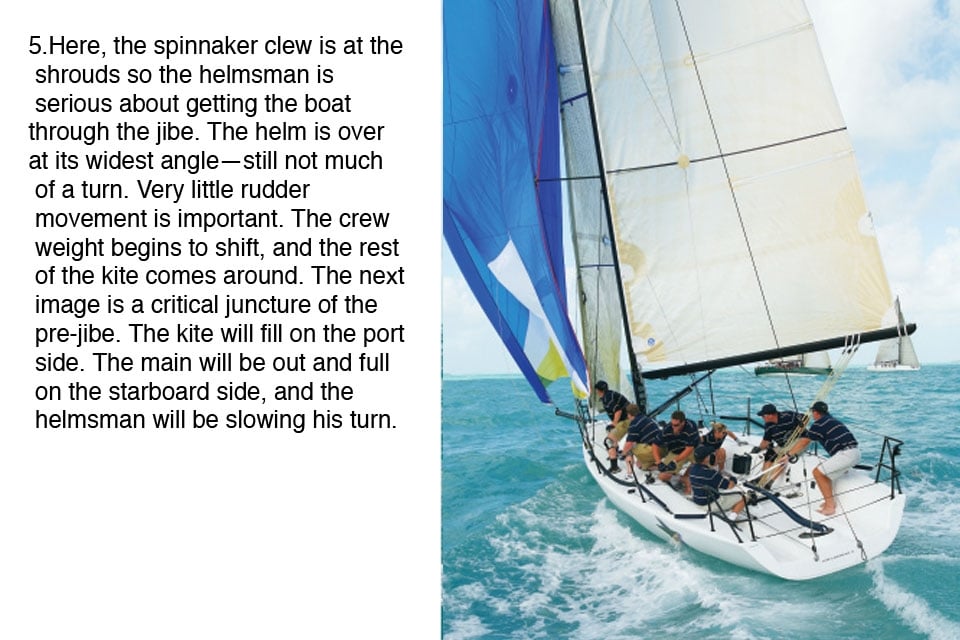
jiberight5
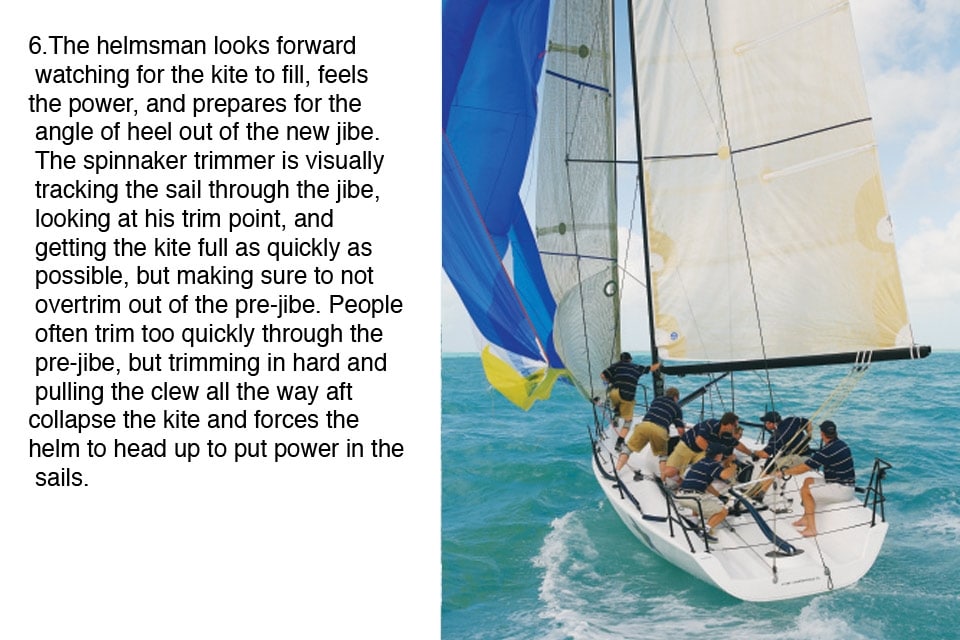
jiberight6
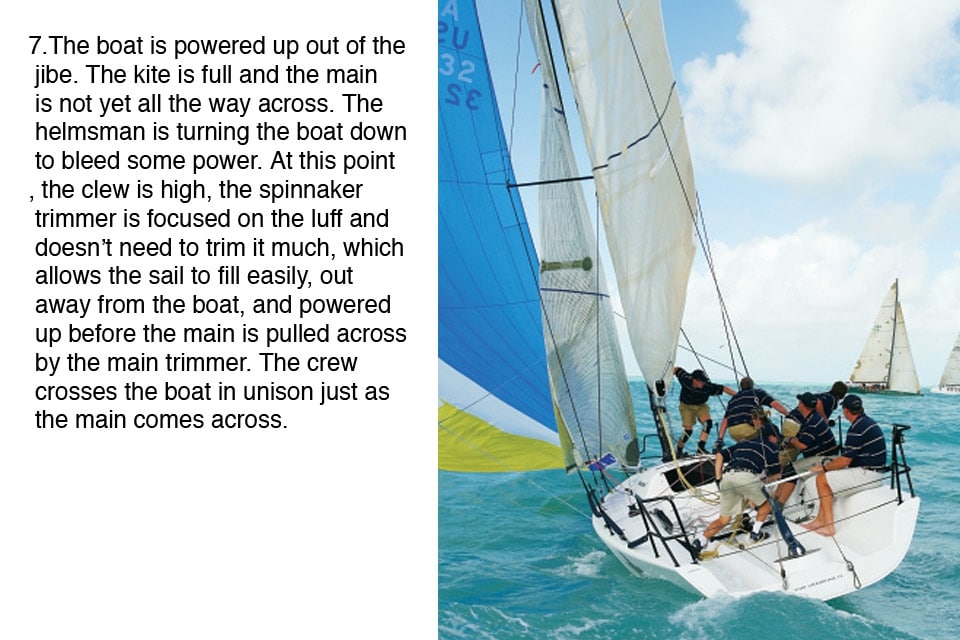
jiberight7
